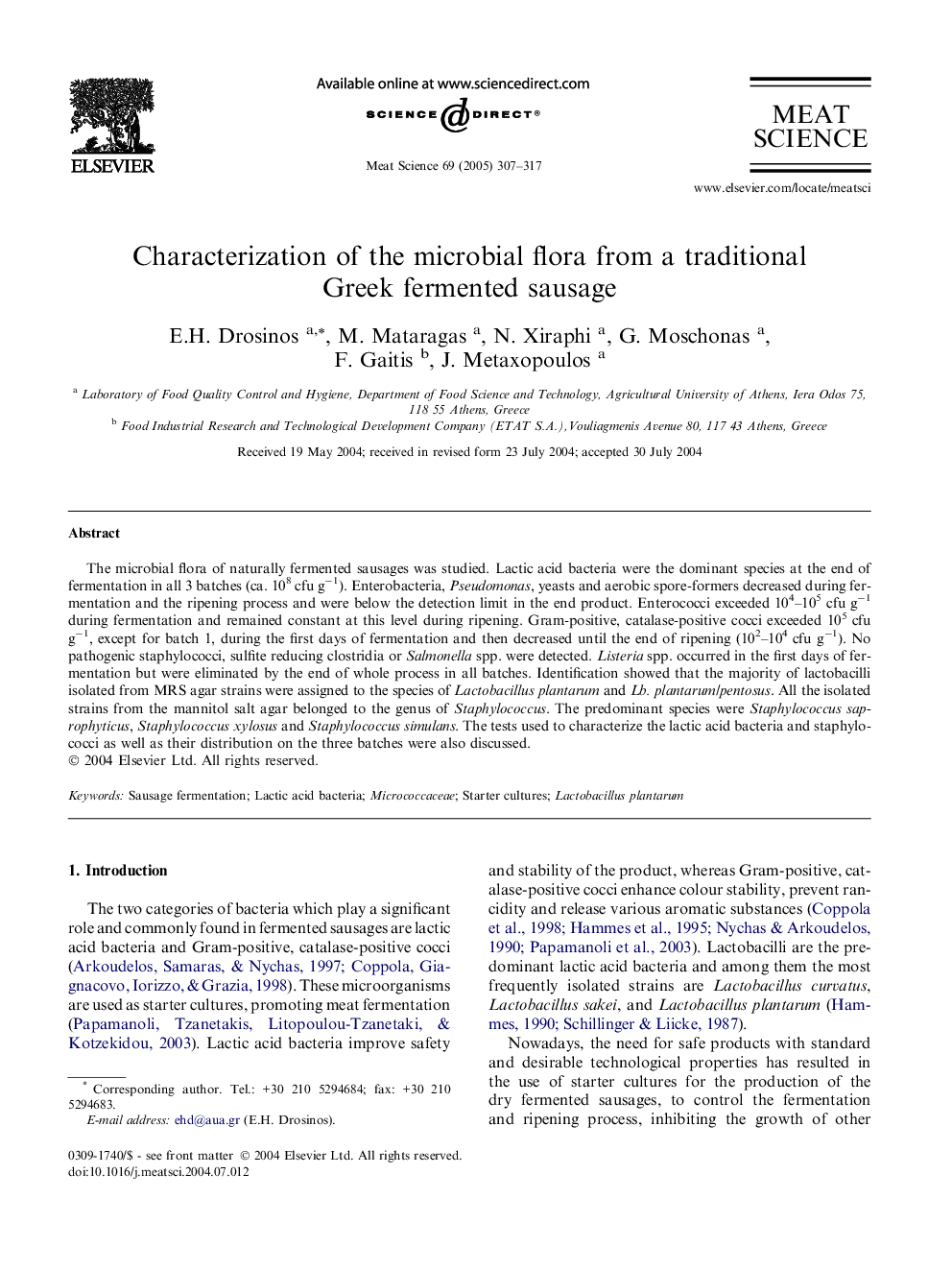| Article ID | Journal | Published Year | Pages | File Type |
|---|---|---|---|---|
| 8983761 | Meat Science | 2005 | 11 Pages |
Abstract
The microbial flora of naturally fermented sausages was studied. Lactic acid bacteria were the dominant species at the end of fermentation in all 3 batches (ca. 108 cfu gâ1). Enterobacteria, Pseudomonas, yeasts and aerobic spore-formers decreased during fermentation and the ripening process and were below the detection limit in the end product. Enterococci exceeded 104-105 cfu gâ1 during fermentation and remained constant at this level during ripening. Gram-positive, catalase-positive cocci exceeded 105 cfu gâ1, except for batch 1, during the first days of fermentation and then decreased until the end of ripening (102-104 cfu gâ1). No pathogenic staphylococci, sulfite reducing clostridia or Salmonella spp. were detected. Listeria spp. occurred in the first days of fermentation but were eliminated by the end of whole process in all batches. Identification showed that the majority of lactobacilli isolated from MRS agar strains were assigned to the species of Lactobacillus plantarum and Lb. plantarum/pentosus. All the isolated strains from the mannitol salt agar belonged to the genus of Staphylococcus. The predominant species were Staphylococcus saprophyticus, Staphylococcus xylosus and Staphylococcus simulans. The tests used to characterize the lactic acid bacteria and staphylococci as well as their distribution on the three batches were also discussed.
Keywords
Related Topics
Life Sciences
Agricultural and Biological Sciences
Food Science
Authors
E.H. Drosinos, M. Mataragas, N. Xiraphi, G. Moschonas, F. Gaitis, J. Metaxopoulos,
